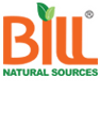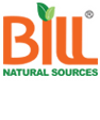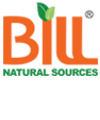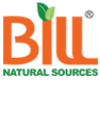Vitamin D

Vitamin D is known as the sunshine vitamin because it is produced in our skin in response to sunlight. Getting a sufficient amount of vitamin D is important for normal growth and development of bones and teeth. It is also needed for improved resistance against certain diseases. If body doesn’t get enough vitamin D, it is at risk of developing bone abnormalities such as soft bones (osteomalacia) or fragile bones (osteoporosis). 1
Benefits of vitamin D:2
- Helps in the development and maintenance of bones and teeth.
- Helps in the absorption and use of calcium and phosphorus.
- Calcium intake, when combined with sufficient Vitamin D, a healthy diet and regular exercise may reduce the risk of developing osteoporosis.
- Helps to build strong bones and teeth.
- Helps to maintain immune function.
Factors that contribute to vitamin D deficiency:1
- Being in an area with high pollution
- Using sunscreen
- Spending more time indoors
- Living in big cities where buildings block sunlight
- Having darker skin. (The higher the levels of melanin, the less vitamin D the skin can absorb.)
Symptoms of vitamin D deficiency:3
- Fatigue
- Bone pain
- Muscle weakness, muscle aches, or muscle cramps.
- Mood changes, like depression.

Some medical conditions that cause vitamin D deficiency:3
- Cystic fibrosis, Crohn's disease, and celiac disease: These diseases do not allow the intestines to absorb enough vitamin D through supplements.
- Obesity: A body mass index greater than 30 is associated with lower vitamin D levels. Fat cells keep vitamin D isolated so it is not released.
- Kidney and liver diseases: These diseases reduce the amount of an enzyme needed to change vitamin D to a form that is used in the body.
- Weight loss surgeries: Weight loss surgeries that reduce the size of the stomach and/or bypasses part of the small intestines make it very difficult to consume sufficient quantities of certain nutrients, vitamins, and minerals.
Different form of vitamin D:9
Vitamin D is a fat-soluble vitamin that exists in two main forms:
- Vitamin D2 (ergocalciferol)
- Vitamin D3 (cholecalciferol).
A major difference between the two is that Vitamin D3 is from an animal source and Vitamin D2 is from a plant source. Our skin makes vitamin D3 when it’s exposed to sunlight. Unlike dietary vitamin D, our skin cannot over produce vitamin D3 because if body has enough vitamin D, skin simply produces less.
When we have too much vitamin D in the body:7
Taking too many vitamin D supplements over a long period of time can cause too much calcium to build up in the body (hypercalcaemia). This can weaken the bones and damage the kidneys and the heart. Signs of vitamin D toxicity include nausea, vomiting, poor appetite, constipation, weakness, and weight loss.7 Although toxicity is rare, it is best to avoid long-term vitamin D doses without supervision from a qualified healthcare professional.
Daily recommended dose of vitamin D:4
|
Life Stage Group |
Vitamin D (µg /day) |
||
|
Min |
Max |
||
|
Infants |
0-12 months |
0.5 |
25 |
|
Children |
1-3 years |
0.8 |
25 |
|
4-8 years |
0.8 |
25 |
|
|
Adolescents |
9-13 years |
0.8 |
25 |
|
14-18 years |
1.0 |
25 |
|
|
Adults |
19 years and older |
1.0 |
25 |
Food for vitamin D:5
|
Food |
Vitamin D per serving (IUs) |
|
Cod liver oil (1 tablespoon) |
1360 |
|
Swordfish (cooked, 3 ounces) |
566 |
|
Salmon (cooked, 3 ounces) |
447 |
|
Tuna (canned in water, drained, 3 ounces) |
154 |
|
Orange juice fortified with vitamin D (1 cup) |
137 |
|
Milk (vitamin-fortified, 1 cup) |
115-124 |
|
Yogurt (fortified with 20% of the daily value of vitamin D, 6 ounces) |
80 |
|
Sardines (canned in oil, drained, 2 sardines) |
46 |
|
Liver (cooked, 3 ounces) |
42 |
|
Egg yolk (1 large) |
41 |
|
Cereal (fortified with 10% of the daily value of vitamin D, 1 cup) |
40 |
|
Cheese (Swiss, 1 ounce) |
6 |
Ways to boost vitamin D level:8
- Spend time in sunlight: Our skin can produce large quantities of vitamin D on its own when exposed to the sun’s UV-B rays.
- Consume fatty fish and seafood: Fatty fish and seafood are among the foods highest in vitamin D. Exact vitamin content may vary depending on the type and source of the food.
- Eat more mushrooms: Like human, mushrooms also produce vitamin D when exposed to UV light. Wild mushrooms or commercially grown ones treated with UV light have the greatest vitamin D levels.
- Include egg yolks in the diet: Egg yolks are another source of vitamin D that we can easily add to our routine. Chickens with access to sunlight produce more vitamin D in their eggs than those that remain indoors.
- Eat fortified foods: Vitamin D is often added to food such as milk and breakfast cereals to increase intake of this nutrient.
- Try a UV lamp: Lamps that emit UV-B radiation may also boost vitamin D levels. However, they can be expensive and dangerous if used for more than 15 minutes at a time.
- Take vitamin D supplement: Supplements are often needed if we don’t obtain enough vitamin D from food or sunlight. We should check vitamin D levels in our body before starting vitamin d supplement for the appropriate dose.
During the Fall and winter, we need to get vitamin D from our diet because the sun is not strong enough for the body to make vitamin D. Since it's difficult to get enough vitamin D from food alone, it is a good time to take vitamin D supplement during these times.
Between April to the end of September, we can get enough vitamin D through sunlight on the skin and balanced diet provided our skin gets enough exposure to sunlight. If this is not feasible, it would help to take Vitamin D supplements.
Bill Beauty & Health Products has several products that might be useful.
|
Product |
NPN |
|
Vitamin D 25 mcg (1000 IU) Drops |
80092314 |
|
Vitamin D 25 mcg (400 IU) Drops |
80092315 |
|
Calcium with Vitamin D Coated Tablet |
80073049 |
|
Calcium + Vitamin D Gummies |
80097365 |
|
Vitamin D3 400IU Gummies |
80076185 |
|
Bill Calcium with Vitamin D Softgels |
80006914 |
|
Vitamin D3 1000 IU Softgels |
80096641 |
|
Bill Vitamin D 400 IU Softgels |
80020802 |
References:
- https://www.healthline.com/health/food-nutrition/benefits-vitamin-d
- http://webprod.hc-sc.gc.ca/nhpid-bdipsn/atReq.do?atid=multi_vitmin_suppl&lang=eng
- https://my.clevelandclinic.org/health/articles/15050-vitamin-d--vitamin-d-deficiency
- http://webprod.hc-sc.gc.ca/nhpid-bdipsn/atReq.do?atid=multi_vitmin_suppl&lang=eng
- https://my.clevelandclinic.org/health/articles/15050-vitamin-d--vitamin-d-deficiency
- https://www.nhs.uk/conditions/vitamins-and-minerals/vitamin-d/
- https://ods.od.nih.gov/factsheets/VitaminD-Consumer/
- https://www.healthline.com/nutrition/how-to-increase-vitamin-d#6.-Take-a-supplement
- https://www.healthline.com/nutrition/vitamin-d2-vs-d3#TOC_TITLE_HDR_5









